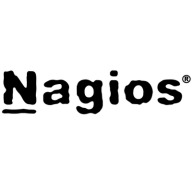

Nagios XI and OpenText Operations Bridge compete in the IT monitoring solution category. Based on the features comparison, OpenText Operations Bridge appears to have the upper hand in large-scale environment integration, though Nagios XI offers extensive customization options.
Features: Nagios XI allows for extensive configuration and customization through its wide array of plugins, which is particularly beneficial for users who need specific monitoring solutions. It supports open-source integration, making it flexible in diverse environments. The custom API feature expands its integration capabilities significantly. OpenText Operations Bridge integrates operational data sources for a centralized monitoring experience, offering comprehensive event management and robust event correlation. It provides hybrid capabilities and role-based access to enhance data privacy, which is valuable for large enterprises.
Room for Improvement: Nagios XI can be difficult to configure for new users and lacks a built-in clustering feature. Streamlining its user interface and plugin management could increase its usability. Greater integration with incident management and API support would also be beneficial. OpenText Operations Bridge is resource-intensive and requires multiple servers for full deployment. Its complex and costly licensing model and suboptimal interface performance during large event volumes are areas for improvement.
Ease of Deployment and Customer Service: Nagios XI's deployment requires significant configuration efforts, though it is adaptable to various environments including private cloud setups. Users benefit from community support and extensive online resources. OpenText Operations Bridge is primarily an on-premises solution with some hybrid capabilities, known for its challenging setup process requiring skilled technical support. Customer service is seen as effective but necessary due to the solution's complexity.
Pricing and ROI: Nagios XI offers a free open-source version, providing a good ROI given its minimal initial investment and competitive commercial package pricing. OpenText Operations Bridge, on the other hand, is priced higher, making it more suitable for larger enterprises in need of a comprehensive monitoring solution. The value it provides is recognized, but smaller organizations may find the cost prohibitive. Both solutions enhance ROI by optimizing resource use and service management.
OpenText goes out to bring the right people to answer any inquiries I have.
If the user interface isn’t presenting data well, it becomes difficult to manage when scaling.
It is very stable.
Many tools have poor user interfaces, making them hard to manage and navigate.
The GUI could be improved. It's a bit too basic.
Splunk is more business-friendly due to its prettier interface.
We are using the free, open-source version.
The pricing for the Nagios XI product is good and better than other solutions.
From a cost perspective, OpenText Operations Bridge is cost-effective as it saves us man hours.
Nagios XI simplifies our setup and reduces the time spent configuring monitoring tools.
The alerting system is very effective.
This integration ensures that when monitoring systems alert and subsequently resolve, tickets are automatically created and closed.


Nagios XI provides monitoring of all mission-critical infrastructure components, including applications, services, operating systems, network protocols, systems metrics, and network infrastructure. Third-party add-ons provide tools for monitoring virtually all in-house and external applications, services, and systems.
Nagios XI uses a powerful Core 4 monitoring engine that provides users with the highest levels of server monitoring performance. This high degree of performance enables nearly limitless scalability and monitoring powers.
With Nagios XI, stakeholders can check up on their infrastructure status using the role-based web interface. Sophisticated dashboards enable access to monitoring information and third-party data. Administrators can easily set up permissions so users can only access the infrastructure they are authorized to view.
Nagios XI Benefits and Features
Some of the benefits and top features of using Nagios XI include:
Reviews from Real Users
Nagios XI stands out among its competitors for a number of reasons. Several major ones are its integration options and monitoring abilities, as well as its alerting features.
David P., a senior DevOps engineer at EML Payments Ltd, writes, “We use Nagios as a network discovery tool. We use Nagios to maintain our uptime statistics and to monitor our services. It has allowed us to be much more sophisticated in our monitoring and alerting.”
An IT-OSS manager at a comms service provider notes, “Nagios XI has a custom API feature, and we can expose custom APIs for our integration. This is a great feature.”
We monitor all Cloud Monitoring Software reviews to prevent fraudulent reviews and keep review quality high. We do not post reviews by company employees or direct competitors. We validate each review for authenticity via cross-reference with LinkedIn, and personal follow-up with the reviewer when necessary.